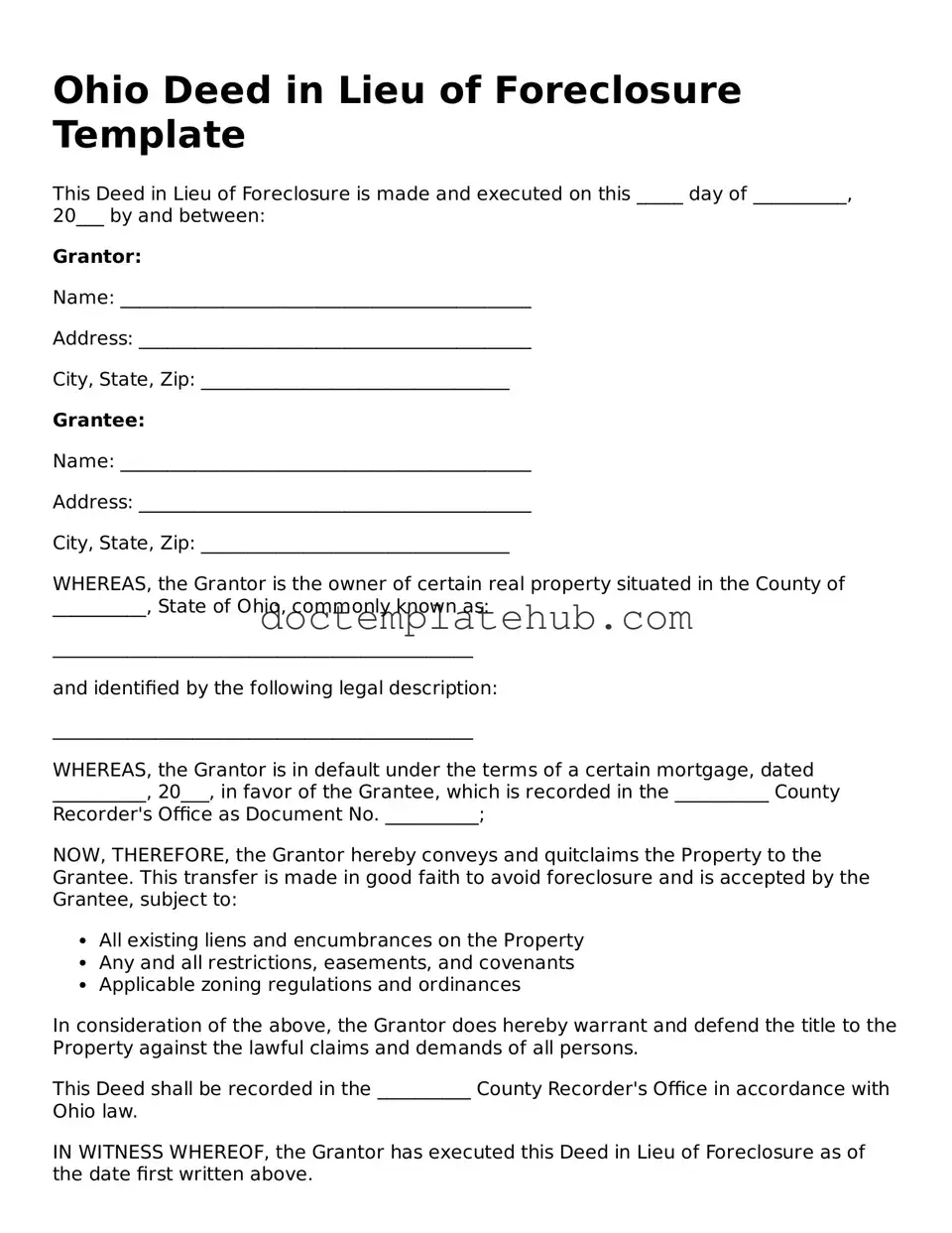What is a Deed in Lieu of Foreclosure?
A Deed in Lieu of Foreclosure is a legal agreement where a homeowner voluntarily transfers ownership of their property to the lender to avoid foreclosure. This option is typically pursued when the homeowner is unable to keep up with mortgage payments and wants to mitigate the negative impact of foreclosure on their credit history.
Who is eligible for a Deed in Lieu of Foreclosure?
Eligibility for a Deed in Lieu of Foreclosure generally depends on the lender's policies. Homeowners facing financial hardship, such as job loss or medical expenses, may qualify. However, the property must be free of other liens, and the homeowner must demonstrate that they cannot continue making mortgage payments.
What are the benefits of choosing a Deed in Lieu of Foreclosure?
One of the main benefits is that it can help homeowners avoid the lengthy and stressful foreclosure process. Additionally, it typically results in less damage to credit scores compared to a foreclosure. Homeowners may also be able to negotiate a smoother transition, including potential relocation assistance from the lender.
What are the drawbacks of a Deed in Lieu of Foreclosure?
While there are benefits, there are also drawbacks. Homeowners may still face tax implications, as forgiven debt can be considered taxable income. Additionally, not all lenders accept Deeds in Lieu, and the process can be complicated, requiring careful negotiation and documentation.
How does the process work?
The process typically begins with the homeowner contacting their lender to discuss their financial situation. If both parties agree to proceed, the homeowner will complete the necessary paperwork, including the Deed in Lieu of Foreclosure form. The lender will then review the documentation and may require an appraisal or inspection before finalizing the transfer.
What happens to my mortgage debt after a Deed in Lieu of Foreclosure?
In most cases, the mortgage debt is forgiven once the Deed in Lieu is executed. However, homeowners should clarify this with their lender, as some lenders may reserve the right to pursue a deficiency judgment if the property sells for less than the mortgage balance.
Can I still live in my home during the Deed in Lieu process?
Generally, once the Deed in Lieu is agreed upon and executed, the homeowner will need to vacate the property. However, some lenders may offer a grace period to allow homeowners to find alternative housing, but this is not guaranteed.
Is legal advice recommended before proceeding with a Deed in Lieu of Foreclosure?
Yes, seeking legal advice is highly recommended. An attorney can help homeowners understand their rights and obligations, negotiate with lenders, and navigate the complexities of the process. This can be especially important if there are other liens or debts involved.
How does a Deed in Lieu of Foreclosure impact my credit score?
While a Deed in Lieu of Foreclosure is less damaging than a foreclosure, it will still have a negative impact on your credit score. The extent of the impact can vary based on individual circumstances, but it’s generally seen as a significant negative mark on your credit report.
Are there alternatives to a Deed in Lieu of Foreclosure?
Yes, there are alternatives. Homeowners may consider loan modifications, short sales, or even bankruptcy, depending on their financial situation. Each option has its own set of implications, so it’s important to evaluate all available choices before making a decision.
